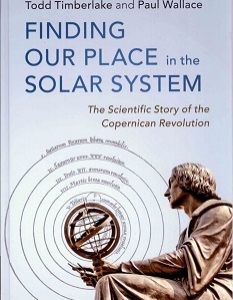In the words of its subtitle, this book tells “The Scientific Story of the Copernican Revolution”. In an early section, the authors consider why anyone should read their book: “After all”, they say, “you already know the punchline: the Earth really does spin on its axis and orbit the Sun”.
They liken the book to “a mystery novel in which you already know the answer to the puzzle” and hope to engage readers because “the story of how that answer was discovered is fascinating”. That is, however, where the analogy with a novel ends: it’s a fairly technical tale and is presented in the style of a textbook. That said, any mathematical details are relegated to an appendix and the text is more readable than the average physics tome.
The book will be of interest to historians of astronomy and students of the philosophy of science, but it could be read by anyone with a reasonable level of scientific literacy. It is illustrated, though not profusely, with black-and-white diagrams and photographs, and ends with chapter notes, references and an index.
We may never see again the type of revolution in science that Copernicus provided, but if we don’t understand how such revolutions happen we won’t be able to spot the next one coming. That is the underlying utility of a book like this.











